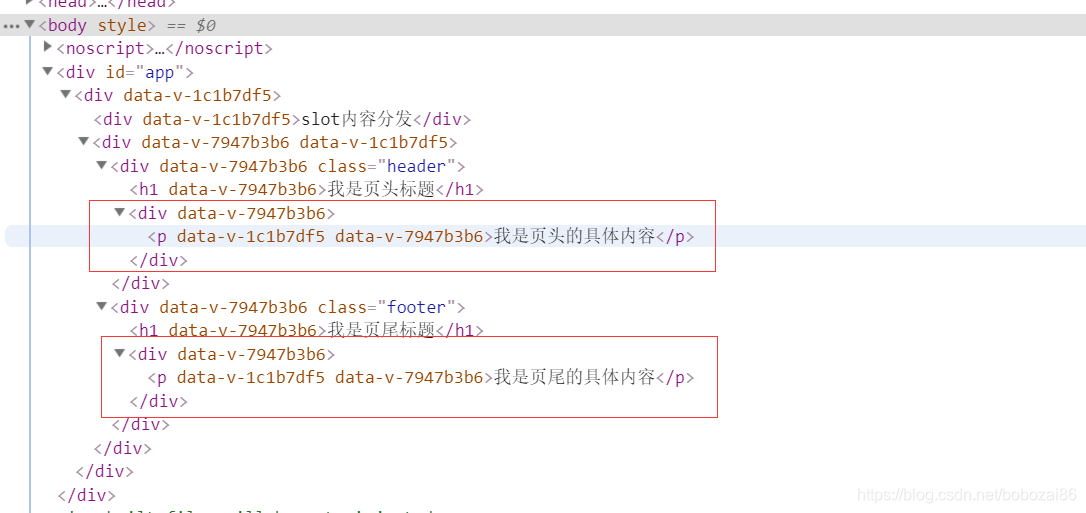|
阅读:6104回复:0
Vue插槽的理解和使用
对于插槽的概念和使用,这是vue的一个难点,这需要我们静下心来,慢慢研究。以下是我这两天通过官网和其他资料的学习和使用总结出来的笔记,如有错误或者有不同见解的,欢迎留言,一起学习。
什么是插槽 插槽就是子组件中的提供给父组件使用的一个占位符,用<slot></slot> 表示,父组件可以在这个占位符中填充任何模板代码,如 HTML、组件等,填充的内容会替换子组件的<slot></slot>标签。 代码如下: 1、在子组件中放一个占位符 <template> <div> <h1>今天天气状况:</h1> <slot></slot> </div> </template> <script> export default { name: 'child' } </script> 2、在父组件中给这个占位符填充内容 <template> <div> <div>使用slot分发内容</div> <div> <child> <div style="margin-top: 30px">多云,最高气温34度,最低气温28度,微风</div> </child> </div> </div> </template> <script> import child from "./child.vue"; export default { name: 'father', components:{ child } } </script> 3、展示效果:   现在来看看,如果插槽中没有放入插槽,同样的父组件中在子组件中填充内容,会是啥样的: <template> <div> <h1>今天天气状况:</h1> <!-- <slot></slot>--> </div> </template> <script> export default { name: 'child' } </script>  总结:如果子组件没有使用插槽,父组件如果需要往子组件中填充模板或者html, 是没法做到的 插槽的使用 插槽的最最简单使用,上面已有例子,这里就不写了,接下来看看,插槽其他使用场景 插槽使用 - 具名插槽 描述:具名插槽其实就是给插槽取个名字。一个子组件可以放多个插槽,而且可以放在不同的地方,而父组件填充内容时,可以根据这个名字把内容填充到对应插槽中。代码如下: 1、子组件的代码,设置了两个插槽(header和footer): <template> <div> <div class="header"> <h1>我是页头标题</h1> <div> <slot name="header"></slot> </div> </div> <div class="footer"> <h1>我是页尾标题</h1> <div> <slot name="footer"></slot> </div> </div> </div> </template> <script> export default { name: "child1" } </script> <style scoped> </style> 2、父组件填充内容, 父组件通过 v-slot:[name] 的方式指定到对应的插槽中 <template> <div> <div>slot内容分发</div> <child1> <template slot="header"> <p>我是页头的具体内容</p> </template> <template slot="footer"> <p>我是页尾的具体内容</p> </template> </child1> </div> </template> <script> import child1 from "./child1.vue"; export default { name: "father1", components: { child1 } } </script> <style scoped> </style> 展示效果   参考: https://www.cnblogs.com/mandy-dyf/p/11528505.html |
|

